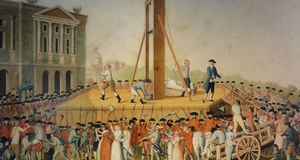Examing the Social Impacts of French Education Reforms in Tonkin, Indochina (1906-1938)“Assimilation” Theory in DisputeLooking at a broad picture, the discussion surrounding “assimilation” theory in France as a matter of fact dates back approximately right after the French Revolution. The Revolution established equality and liberty to all Frenchmen; this is regarded as self-evident and cannot be reversed. The issue remained is to agree on who would lay the claim to being French. Would subjects in colonies qualify for French citizenship if they accumulated enough “Frenchness”? And what should be the measure yardstick? Examining the history of colonial policy, one recognizes that this is indeed a thorny question that have plagued the French Empire for several centuries until the decolonization wave following World War II. To an extent, it still lives in debate nowadays in France on immigration from North and West Africa. The empire has never pursued a consistent pattern in responding to this imminent problem. Each regime flipped back and forth on the guidelines of granting citizenship and colonial representation. Among the contesting points was the paradox of how the indigenous population was always significantly larger compared to that of France, which would make total assimilation and extending appropriate colonial representation somewhat of an irony: For example, in 1920 there was 39 million French citizens living in metropolitan France, versus 56 million subjects living in colonies, protectorates and mandates26. In French Republican ideology, the school plays the role of both “public socializing agent” and the mechanism to produce French citizens with certain shared beliefs and principles27. This idea was applied to colonial school system, however it met with much resistance. Surprisingly, the most vocal ones against it were not the indigenous, but the colonists and settlers. In the sessions of the Congrès Coloniale Internationale de Paris and Congrès Colonial National in 1889, Gustave Le Bon, a colonial explorer, presented his report On the Influence of Education and European Institutions on the Indigenous Population of the Colonies, in which he attacked the French “taste for uniformity” and concluded that the “assimilation” theory generated fatal results. His discourse was filled with scorn and racism: “The kind of instruction applicable to civilized men is not at all applicable to half-civilized men… Negroes, scarcely emancipated, whose cerebral development corresponds hardly to that of our Stone Age ancestors, have jumped into all the complexities of our formidable modern administrative machines…” Others concurred with him, being less discriminating but still pointing out that maybe it was not in both parties’ interests to force upon non-French people Western school curriculum and lifestyles. Additionally, in Tonkin, French settlers viewed alarmingly the increase in the numbers of Vietnamese enrolling in French schools. They argued that French classrooms were being crowded with ill-prepared Vietnamese students, and demanded a separate schooling system that segregated Europeans and the indigenous to ensure the quality of teaching. There was also fear that qualified Vietnamese would have advantages in job application, and will contest the social space reserved for French settlers28. Last but not least, nationalist and anti-colonial sentiments appeal to some of the Western-educated Vietnamese, who saw no reason for the oppression placed on their country, and who possessed the intellectual mean to advocate for resistance and change. School therefore was also a potential ground for political instability. One can see that amidst all the antagonism bred by colonial “assimilation” theory, education policy in Tonkin proved to be a rather troublesome and battleground.Three Major Reforms in 1906, 1917 and 1926 in Tonkin and Their Social ImpactsEducation Reform of 1906 While the French quickly dissolved the indigenous schooling system in Cochinchina and recruited local students to French and Franco-Vietnamese schools, in Tonkin they handled the matter more hesitantly. They maintained the indigenous schools while simultaneously installing more Franco-indigenous schools and introducing Western materials into official curriculum. (Franco-indigenous school adopted French programs of study and openly admitted both French and Vietnamese students, though more so of the latter than former. As discussed before, French school, where the majority of students were French, was never a popular option for local Tonkin students). In 1906, Governor General of Indochina Paul Beau issued through Office of Public Instructions a regional code to reform the traditional triennial examinations. It required the candidates to take, beginning in 1909, math, science, and chữ Quốc ngữ. Indigenous schools were obligated to incorporate these subjects into the curriculum29. Moreover, in 1909, chữ Quốc ngữ was officially adopted as the national writing system. This new alphabet not only made it a lot easier for the French to deal with Vietnamese paperwork, but also helped to undermine the role of traditional mandarins. Mandarins were those who were most unwelcoming to French colonialism, and the prestigious position they currently occupied in Vietnamese society facilitated their quests for resistance. The French challenged this status quo by aiming at creating a new category of elites who would be much more accommodating to French rule. In 1915, Chinese characters and chữ nôm were removed from exam materials. This was followed almost immediately by education chaos. Truc Khe Ngo Van Trien recalls his stormy experience: “When I was seven (1908), I attended school to learn chữ nôm from a local scholar. When I turned eleven, I moved to another school to learn chữ Quốc ngữ. After a few months and having gained basic knowledge, I returned to the old school to continue with chữ nôm. At the end of 1914, I was disappointed to hear that exams in chữ nôm would no longer be held… I immediately abandoned my study and switch to chữ Quốc ngữ. Luckily I passed in 1915…”30. Many complained that at this conjunction there was a general desertion of chữ nôm, and subsequently Confucian studies, in favor of French for economic and political advancement. This generated public discontent since Confucian studies were considered as the premier source for moral lessons for children. Furthermore, the general quality of French language training was not satisfying. Until the second reform, in Tonkin there was no consistency in curriculum, teacher’s qualification, and exams format. Writer Hoang Ngoc Phach who attended a Franco-Vietnamese school in Hanoi in 1914 notes: “All of my professors were French elders and ladies, or in other words, those who did not meet the criteria to go to the front. They applied for teaching posts, assuming that teaching in colonies required no skills, knowledge or experience… The ladies would make a student with a good accent read out loud the text for the whole class, while they sat and knitted for their husbands…”31. Worse, there were already signs of disparities between rural and urban areas. The French limited the Franco-indigenous schools in Tonkin to only two big cities: Hanoi and Haiphong. Students in the countryside were confined to indigenous schools, which severely lacked facilities and teachers to operate the new curriculum. Franco-indigenous schools in this period could be seen as somewhat of a prestige. An official report listed the statistics: in 1916 there were 6,070 indigenous schools in Tonkin serving 68,690 students. In contrast, Franco-indigenous schools numbered only 56, enrolling a mere 8,431 students32. These prevalent education mayhems forced French administration to come up with a more standardized system. Education Reform of 1918 There were numerous concerns behind the 1917/1918 education reforms. As mentioned, the situation in Tonkin was getting out of hands; most French inspectors could not assess the quality of materials being taught, especially in indigenous schools. They had to instead rely on information about the content of education from the court of Annam, which unsurprisingly did not make them feel comfortable. At the same time, World War I created a shortage of manpower to run the colonial government. The French had to somehow produce quickly a group of Vietnamese who would be capable of working in civil service33. In 1917, Governor General Albert Sarraut approved a series of decrees (known as Règlement Général de l’Instruction Publique en Indochine) aimed at creating a unitary educational system for all Vietnamese. “Franco-indigenous” school was renamed “Franco-Vietnamese”, whereas the indigenous school was totally abolished. Under the 1917/1918 Code, a complete and comprehensive system emerged for the first time. It consisted of a five-year primary level, four-year primary-superior course, and a three-year secondary education34. French became the official language of instruction. Notably, a university was also open in Hanoi, offering professional training in fields such as Law, Public Works and Medicine. This educational system, while comprehensive, was “characterized by internal stratification along class lines”35. Students in the rural areas typically only had access to three first years of education. They stopped afterwards partly due to financial circumstances, partly due to the fact that it is quite impractical to acquire foreign language skills if the intended career was in farming or raising stocks. There was also a constant shortage of available institutions compared to pre-colonial time. The indigenous model of school system, while never monitored and lacked official consistency, had put the matter of education into the hands of villagers, not the state. Recruitment of teachers from local mandarin class means that instructors were often readily available in the village. These scholars, however, had become formally obsolete under the 1917/1918 restructure. At the same time there was not enough supply of instructors who were able to teach the new curriculum. Granted, both rural and urban areas after the closure of indigenous schools faced extreme scarcity of qualified teachers, but the problem was more predominant in the countryside. Many teachers who were sent to villages could barely speak French; they moreover showed disdain for life in the village, having grown up in the city for most of their life. The conflict between these appointees and villagers would manifest more clearly following the reform in 1926. Another difficulty the French faced was the rural customs in regards to schooling. Village schools were mostly held in communal houses “while village elders sat in council in the same building or villagers stopped in to observe class”36. Classroom was always a rather frenzied environment, with many participants not formally registered as students. In additions, it had been the traditional lifestyle of rural children to skip classes frequently, to help out parents with farming or household tasks. They still held on to the belief that they could catch up anytime just as under the old system, not fathoming that the new French-approved curriculum listed out specific materials to be covered only within certain days. Học Báo newspaper quoted a rural teacher in 1924: “My class had 47 students in total. Eight were absent, but only two had medical reasons. The rest asked for permission to stay home, but I had no idea for what purpose: to attend village feast or to look after the herds. There were days when half of the class was missing”37. The cities Hanoi and Haiphong presented pressing problems as well. Franco-Vietnamese primary level of education was available to general public: In Tonkin in 1920 there were 39318 students enrolled in 1133 primary schools. By 1926, the number grew to 83706 students in 1306 schools. When it comes to post-primary level, however, the statistics shrink noticeably. In 1920 there were only 3 schools catering 1102 students, amounting 2.8 percent of the population. In 1926, the number grew to 8 schools and 1123 enrolled students, indicating 1.3 percent of the population. Secondary education was not formally installed in Tonkin until 1923, and by 1926 there was only one school with 24 students38. These statistics show that in even urban areas, the majority of students did not acquire a complete education. The French aimed at creating a new category of elites in Tonkin, but the colonial education system failed to generate supply for this demand. Instead, many of the contemporary students had extremely bad command of French, but at the same time they derided their mother tongue. Public concern of déraciné (a person “uprooted” from Vietnamese origins) and moral degradation was rampant: “The new generation of students, they not only are unable to produce anything worthy of consideration to the national body of literature, but they also contribute to disgracing our national language. Nowadays we observe frequently these “new” students gathering and talking only in French. Not only on the topics of philosophy or politics, but even just basic phrases like hello, thank you, or goodbye. They consider that impressive and prestigious…”39 The poet Luu Trong Lu laments: “We used to be Chinese. Now we are French. Have we ever been allowed to be Vietnamese?”40. Pham Quynh comments: “The nation is like a ship in the middle of a wide river; it has long ago left one shore, but it is still far from the other”41. For the very few crème de la crème who made it to post-primary education in Franco-Vietnamese schools, problems in the classroom still existed. The French asserted their racial superiority through school curriculum by teaching Vietnamese students “the virtues of manual labor, the backwardness of their race and culture, and the benefits of French rule”42. History and language lessons repeatedly stressed the inability of Vietnamese to rule themselves. Additionally, racism and physical brutality was never absent. Humiliation, whether in corporal or mental form, served to remind Vietnamese that they could not question French authority. To the students, who were mostly children of wealthy Vietnamese families, this treatment was unacceptable. They refused to give up seeing themselves as part of the elites in the society. Towards the later years of 1920s several student strikes in post-primary institutions were directly connected to obligatory tasks of manual labor of cleaning toilets, scrubbing floors and serving meals43. Notable were the strikes at the Practical Industry Schooling in Haiphong and the Beaux Arts School of the Indochinese University, Hanoi. The regional disparities and class conflicts caused by education policy was noted by Alexandre Varenne, who succeeded as Governor General of Indochina in 1925. He proposed another set of reforms aiming at resolving the tension, particularly in remedying the situation in rural areas.Continued on Next Page » Suggested Reading from Inquiries Journal
Inquiries Journal provides undergraduate and graduate students around the world a platform for the wide dissemination of academic work over a range of core disciplines. Representing the work of students from hundreds of institutions around the globe, Inquiries Journal's large database of academic articles is completely free. Learn more | Blog | Submit Latest in Anthropology |
















